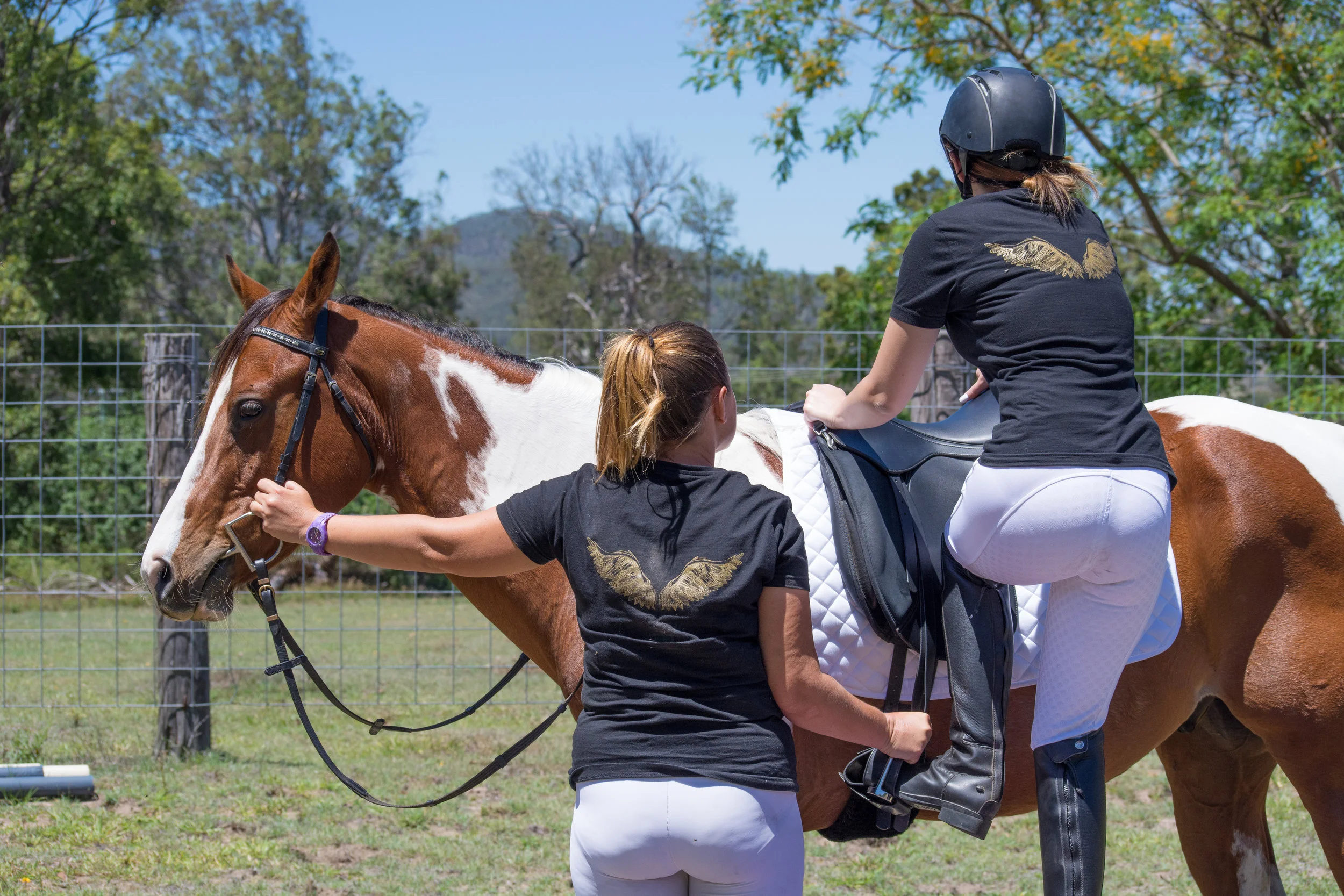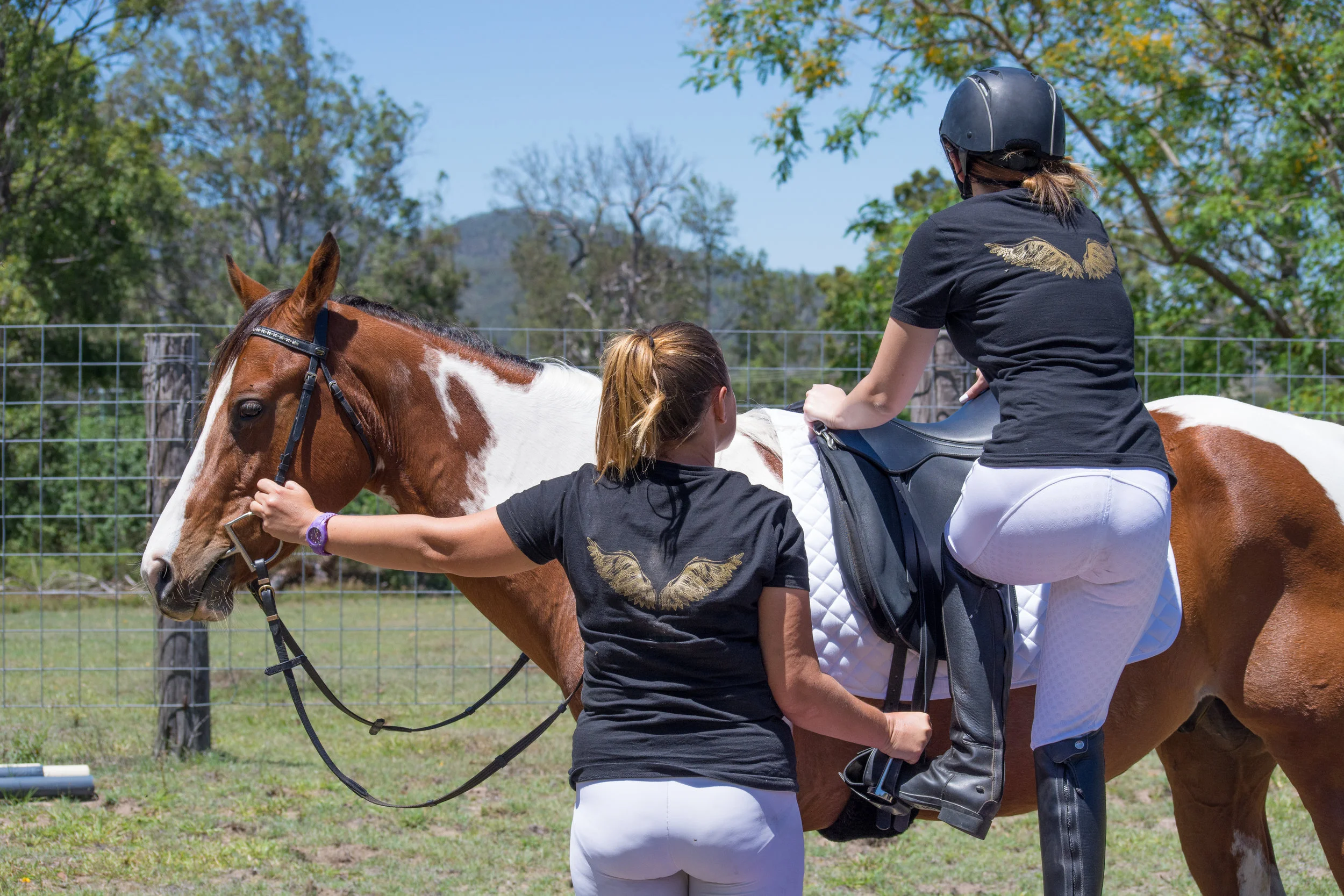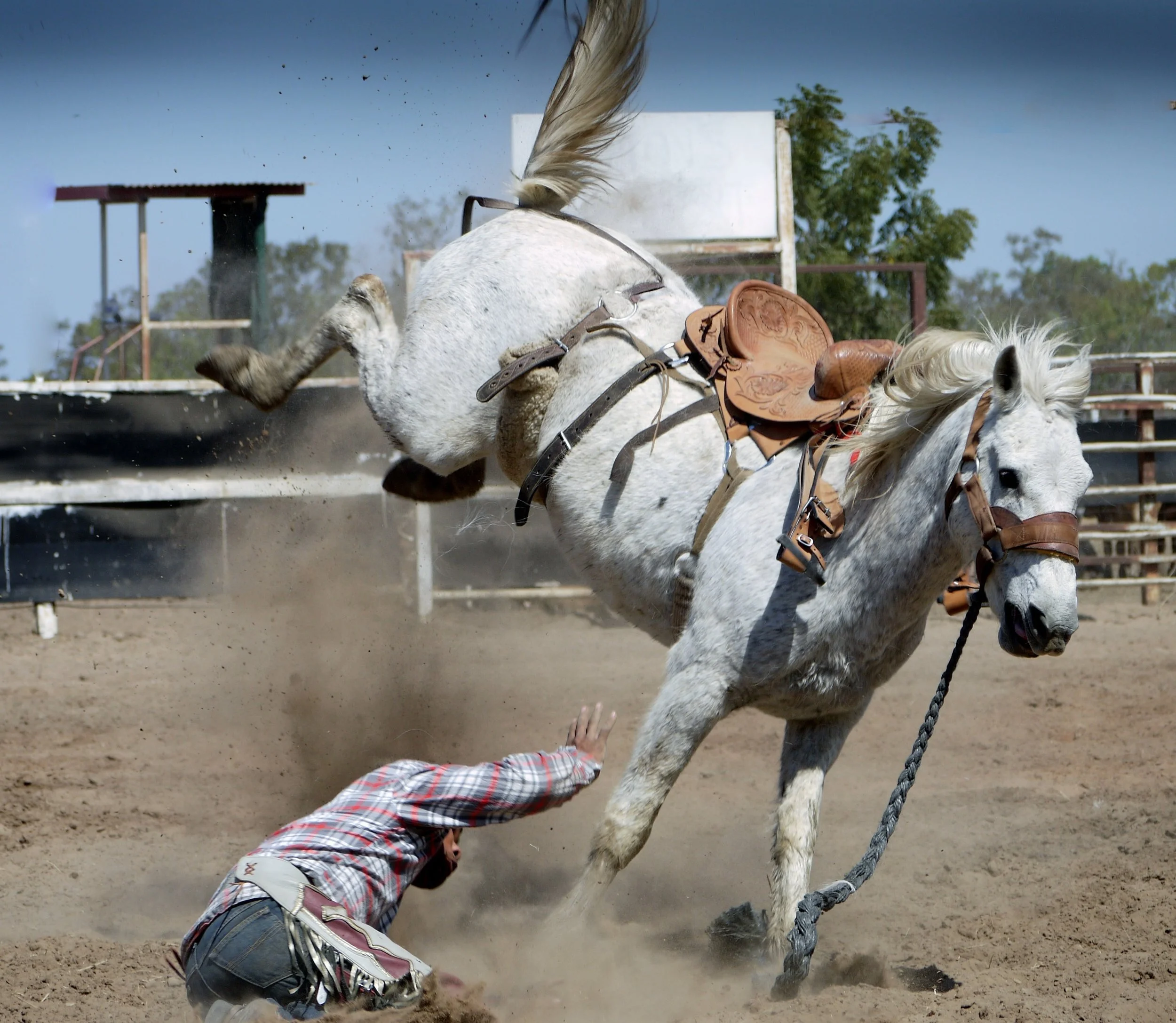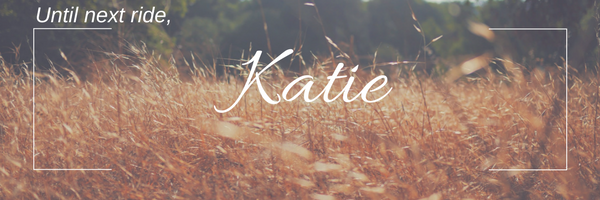Riding your horse doesn't have to be the crux of your training
When your horse is giving you signs they don’t like being ridden, what can you do? I share a little of my experience in helping Stormy cope with riding.
Some of you might know that recently we had to retire Custard from riding. It’s the downside of loving an older horse - eventually it’s not suitable, viable or sensible to continue to ride.
So Custard is a happy gentleman of leisure, doted on with plenty of love and treats.
This did leave me without a horse of my own to ride. Luckily, I was able to start working with another of my friends boys - Stormy.
Stormy is an 17 year old OTT Thoroughbred with poor conformation - sway back, club foot, and pigeon toed. He had been out of work for a while, loves to run and really thrives on that one-on-one interaction.
Due to that conformation, he has some issues with discomfort around the shoulders, and is also anxious about being touched and groomed around the withers, or even being tacked up. While he isn’t nasty, he did have a tendency to hold his breath until he couldn’t cope.
He was literally saying
“I ‘m a good boy. This is scary but I’m a good boy. BAAAHHHH I can’t do this it’s too much!!!”,
albiet in body language, not words.
So the last 2 months has been spent:
Gaining consent to work (hey buddy, you have the chance to tell me when you aren’t coping)
Professional body work
Focusing on relaxing and giving him new tools to de-escalate his panic
In-hand work - even advancing to working in-hand with flexion! (We developed this as a lesson plan for our Training Trainability students to work on through May, because Stormy was doing so well with it).
Lunging to improve some strength and fitness
Getting a yes to be bridled (we went back and forward on that, and I began to understand that when he was feeling a bit more pinched or cold in the back, he would give bigger no’s)
Getting yes to being saddled
In just this short time, Stormy has gone from being frightened (in a good boy way) and unfit to developing softness and roundness to his back, confident with his requests (yes, no, give me a moment), and comes running from the back of the paddock to come play with us.
Last weekend we actually tacked up, mounted and had a tiny plod. Just to let him know it isn’t all bad.
The thing is, for 8 weeks we didn’t ride. Yet we still achieved so much and have a happier horse under saddle for the effort. I didn’t need to cave to the expectations of others by putting my horse second.
That is what we stand for.
Want to learn how to use these skills with your own horse? Training Trainability enrolments close on the 19th of June.
The Mounting Issue - Scary Tales from a Professional Rider
Horse’s that play up when being mounted leave us in the most vulnerable of positions.
For a good period of my career as a horse trainer and instructor my biggest worry was horses with issues with mounting. When mounting we are in such a vulnerable position - we are committed to getting onto the horse whilst not being balanced and in the saddle yet.
This fear started with a warmblood thoroughbred cross who would take off broncing when I would have one foot in the stirrup and the other one swinging over his back. He was a big lad and it would really hurt when I fell. I didn’t at the time understand why he was doing it and I didn’t know how to stop it. So I got scared. I had created the problem.
As a teenager I had a pony club instructor that drilled into me the pony club etiquette of mounting. This was where you stood at their shoulder facing their hindquarters with one foot in the stirrup and gracefully swung onto the back of the horse. I never successfully achieved it. My mounting technique became “stand facing the horses hindquarters with foot in the stirrup and hop, hop, hop until I was facing their head and then stand into the stirrup and pull myself up onto the horse from the front of the saddle.” This was fine with the horses that I had ridden up until that warmblood.
He had a large barrel that came down past the length of my leg. Without my awareness as I hop, hop, hoped around to face the front my toe would scrape along his ribs causing his body to tighten and tense up with the pain and discomfort. Then I would pull/haul myself up, twisting the saddle into his now tight and tense back. Standing into the saddle with one foot halfway over his back he would take off broncing leaving me no chance of pulling him up and staying in the saddle. I was just at the beginning of my career as a horse trainer and breaker and now was petrified of mounting unknown horses.
So for me the best way to overcome fear is a sprinkle of faith, a dust of trust and a full stocked armoury of knowledge. What does it look like if a horse is going to react to the mount? What does it feel like? Where do you see the warning signals? What’s the cause? What’s the trigger? But also how do we fix it?
Since that horse, I was able to refine my mounting technique to avoid being the trigger! I also had my fair share of other horses that had different reasons for having problems with being mounted and was able to learn how best to work with them to resolve their issues. I believe the mounting process is the most important process to have safely established because as riders, this is where we are most vulnerable. Also, a horse that figures out it can get out of work this way is the most difficult to fix. Ideally this should be addressed when they are broken in. In my training a prefer a horse that doesn’t know that this kind of behaviour is an option and trying to avoid the broncing out process in favour of the horse accepting the saddle and the restriction of the girth. Accepting my weight and my seat in the saddle. Accepting me as they figure out how to balance me when they move. And lastly established and sound enough through their topline to not need to buck in their transition to canter or other times in the trot etc.
Reasons a horse can bronc or take off in the process of being mounted:
Saddle is not fitted and causing pressure or pain
Problems with their spine or sacroiliac joint
Problems with the way the rider is mounting for example me scraping my toe along the ribs or plonking heavily into the saddle on the mount
The saddle being twisted as you mount
If a horse has had a bad experience being backed, or mounted (for example if at some stage they haven’t been taught to accept the saddle and girth or were sore through their back with someone mounting and it wasn’t addressed) and that memory being triggered
Figuring out it gets them out of work
Actively involve your horse in your training!
When our horses feel a part of their training, they are happier to work with you! Click her to learn moreSigns your horse is not going to let you safely mount
They are standing still or tense as you get ready to mount
They are fidgeting as you get ready to mount
Their back roaches up, you will also feel this if your horse is bracing itself when you sit into the saddle and they might start broncing when you ask them to walk off.
Roaching up through the back as you tighten the girth.
If you lunge them before you ride, they start broncoing when you send them out on the lunge in the walk.
This is definitely not an issue I recommend you taking on lightheartedly NOR without the supervision of a professional with plenty of experience with this. There’s a good chance your instructor won’t have the tools necessary to work through this behaviour and you will want to find a kind breaker to help you and your horse. Once you are successfully mounting your horse again it doesn’t mean that the problem is “fixed”. It will come up again in the future unless you implement some strategies to keep an eye on how your horse is coping with the process. You will most likely need to keep going back and working with the breaker a few times until you can stop it from being a problem at home yourself. This is why I prefer to not have the horse know that its an option in the first place.
For me the most important learning curve of this process and being able to work through it myself with horses was to break down the process so the horse could give me the cue that it was going to be a problem before I was in a vulnerable position halfway on their back. In the process I also teach them acceptance, willingness and give them the opportunity to say no until I can make it a yes. While this is a slower process than our gunhoe cowboys will do, it sets up a relationship with your horse down the track that it is allowed to tell you no when it is uncomfortable and trusts that you will listen rather than push them through their problems. Having our horse actively involved so that the process happens for them not to them means they are happier to explain their gripes and then once we work through all the causes they will more happily and willingly allow us on their back, with our big goal to invite us on their back and enjoy being ridden!!
Actively involve your horse in your training!
When our horses feel a part of their training, they are happier to work with you! Click her to learn moreLooking for more specific content?
Have a question you are seeking answers to? Send us a message and we will create a blog!






